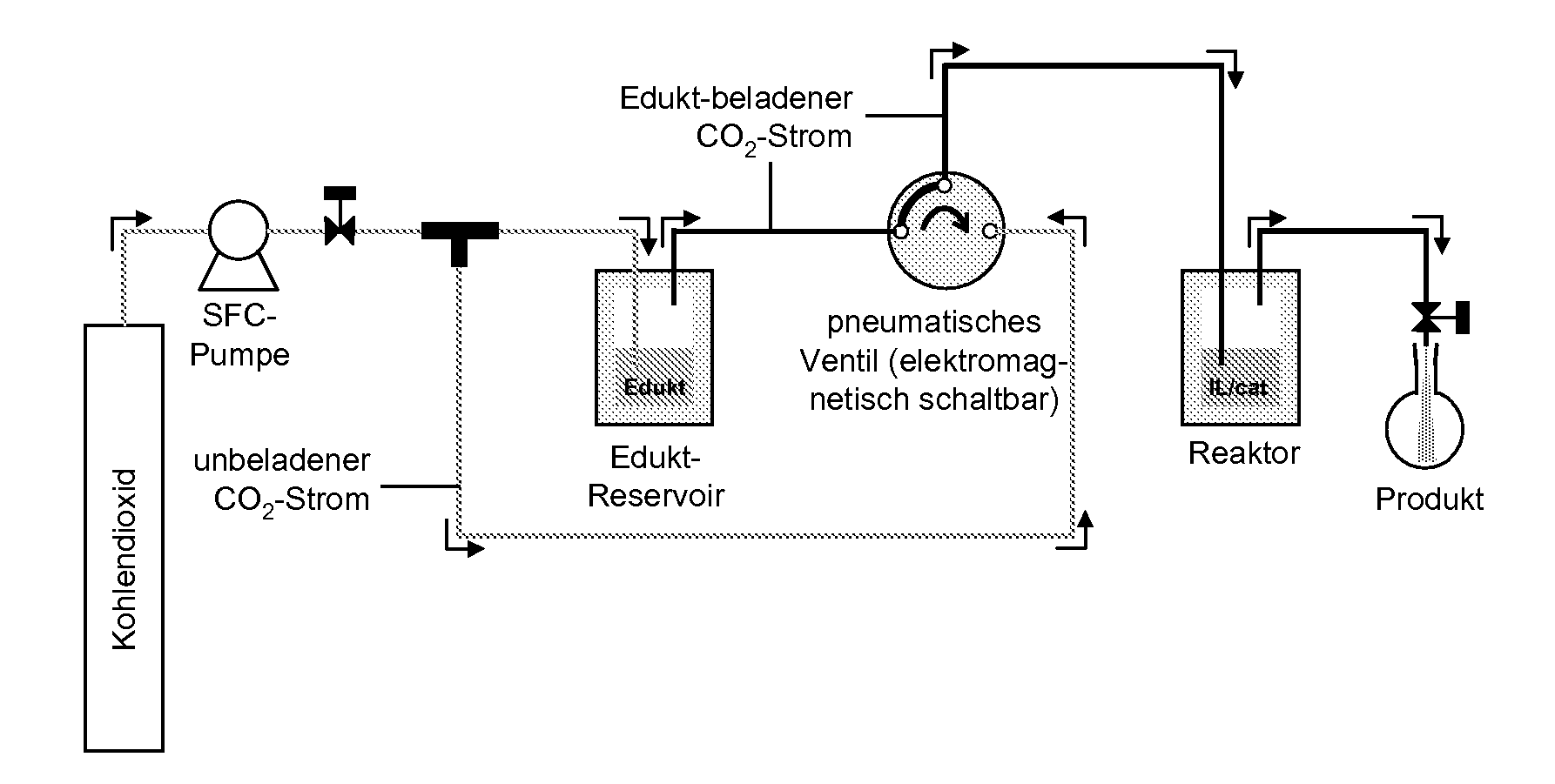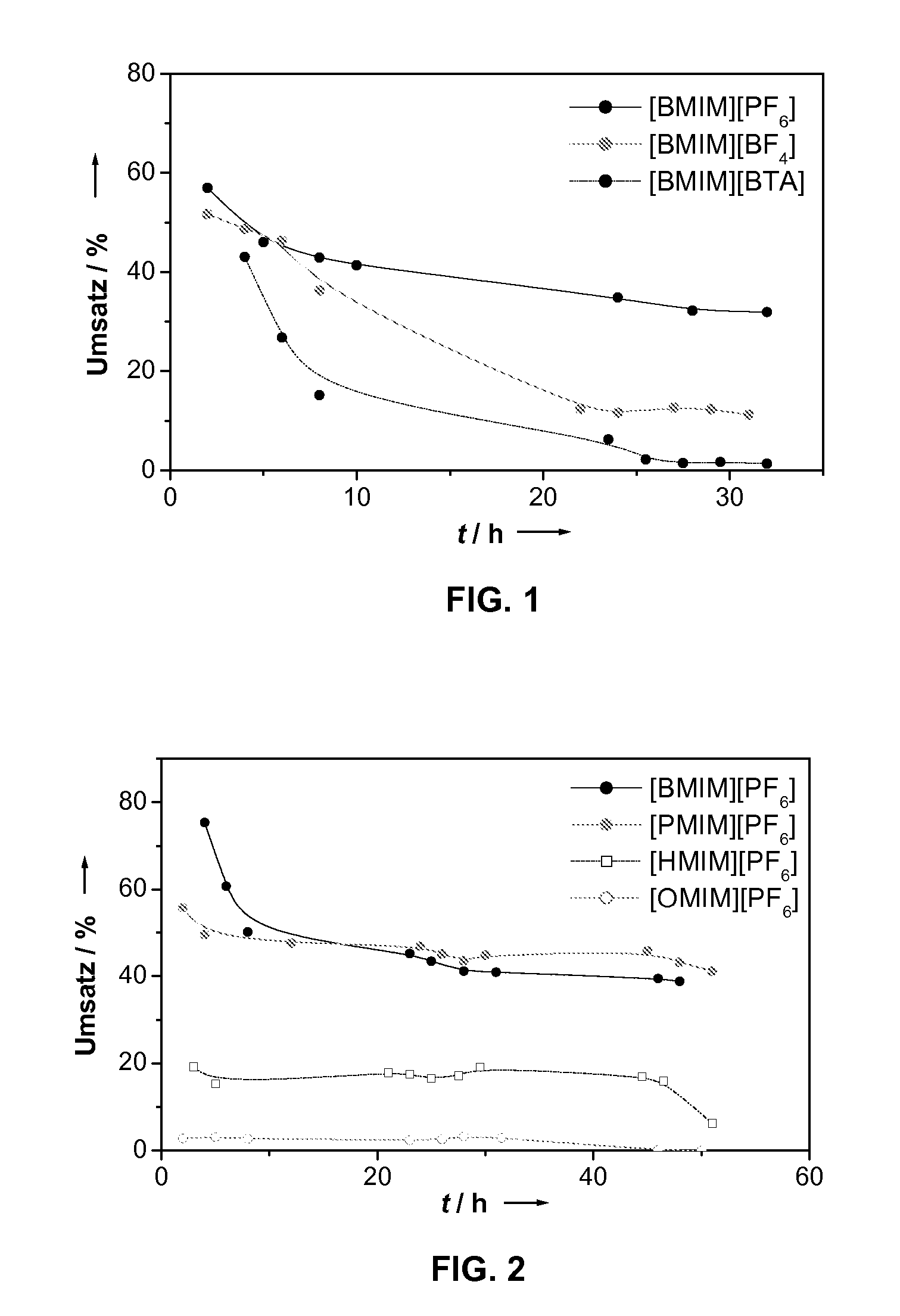Process for Continuous Ringclosing Metathesis in Compressed Carbondioxide
a technology of compressed carbon and ringclosing, which is applied in the direction of hydrocarbon preparation catalysts, supercritical condition processes, bulk chemical production, etc., can solve the problems of reducing yield, reducing the yield of crude oil, and not generally applicable methods
- Summary
- Abstract
- Description
- Claims
- Application Information
AI Technical Summary
Problems solved by technology
Method used
Image
Examples
examples
[0087]
1.1 Batch Process
[0088] In a typical experiment a 10 ml V4A stainless steel autoclave, fitted with Teflon seals, thick-walled boron silicate inspection glasses, a Teflon-coated magnetic stirrer core, a thermocouple, a pressure sensor and a valve, is filled with 5 mg of the Grubbs catalyst 1 or 2, 2.5 ml of an ionic liquid (purified by column chromatography) and 100 μl of 1,7-octadiene 10 under inert conditions. The reactor was charged with CO2 and heated to 40° C. with continuous stirring. After one hour's reaction the reactor was vented through a heated needle valve, while the reaction mixture was separated from the gas current in a subsequent cold trap thermostatically controlled to −60° C. The ionic liquid was extracted with n-pentane, the extract was combined with the contents of the cold trap and analysed by gas chromatography. The results obtained are listed in Table 1.
TABLE 1Results of the batch experiments on ring-closingmetathesis of 1,7-octadieneIonic liquidCatal...
PUM
| Property | Measurement | Unit |
|---|---|---|
| temperature | aaaaa | aaaaa |
| temperature | aaaaa | aaaaa |
| temperature | aaaaa | aaaaa |
Abstract
Description
Claims
Application Information
 Login to View More
Login to View More - R&D
- Intellectual Property
- Life Sciences
- Materials
- Tech Scout
- Unparalleled Data Quality
- Higher Quality Content
- 60% Fewer Hallucinations
Browse by: Latest US Patents, China's latest patents, Technical Efficacy Thesaurus, Application Domain, Technology Topic, Popular Technical Reports.
© 2025 PatSnap. All rights reserved.Legal|Privacy policy|Modern Slavery Act Transparency Statement|Sitemap|About US| Contact US: help@patsnap.com



